Kitcho is perhaps the most famous of the traditional kaiseki establishments in Kyoto. It is situated in the western outskirts of town, near the bottom of a hillside overlooking Kyoto, near the river Oi in an area called Arashiyama. Chef Kunio Tokuoka (born 1960) took over the family reins as head chef, following in the footsteps of his grandfather, who set the original restaurant up Osaka in 1930. The Kyoto establishment was founded in 1938. Kunio Tokuoka was the first chef ever awarded the national Medal Of Honour With Purple Ribbon from the Japanese government in 1981, and in 1988 was the first chef to receive the Prize For Distinguished Cultural Merit. He is noted as an expert on the tea ceremony, which is where the kaiseki cuisine sprang from.
The premises are large by Japanese standards, with various private rooms set amongst attractive gardens. We were led to our private room by our excellent kimono-clad waitress, who provided faultless service and as a bonus spoke good English. By default here you sit on the floor in front of an exquisite black lacquer table, but if you prefer then, by prior arrangement, you can request a low chair to be set up (I recommend this option for comfort). Our room, which by tradition was decorated just with a simple flower display and a hanging ceremonial scroll, looked out on two sides over a prettily lit private garden.
We began with crab from the Sea of Japan, garnished with okra and, and resting in a vinegar jelly. It is worth mentioning at this point that this particular time of year was the season of the full moon, and the black lacquer serving dish reflected this with its silver inset to represent the full moon; even the dish itself was in the shape of a partly full moon, and the chopstick rest was a wisp of autumn grass. The crab was served in a beautiful antique serving dish, and there was an introductory taste of fine sake. The crab meat was of stunning quality, and vinegar jelly balanced the flavour of the crab beautifully (19/20).
Next was a clear soup of conger eel with matsutake mushroom (which cost around three thousand dollars per kilo). The broth was particularly impressive and better than others I had tried on recent nights,, and the mushrooms were both of high quality and had been cooked so that they still had a soft but yielding texture; the eel was also cooked more precisely than other versions I had tried (18/20).
Next was sashimi of "amade" fish, whose appearance was remarkable in that it was cut so thin that it was literally translucent; the knife skills required to do this can only be imagined, and indeed I have never seen this elsewhere. This was served with two dipping sauces: light soy with fish liver and soy with Japanese citrus. There is a limit to the score I am comfortable giving to sashimi, but this was certainly remarkable (18/20). Next was toro tuna and conger eel sashimi, again with two different soy dipping sauces. The quality of the toro in particular was stunning (18/20).
At this point yet another lovely serving dish appeared, this time lined with salmon roe. This was in fact just to accompany a truly spectacular display of dishes that came on a lovely display plate, the dishes placed carefully amongst candles and a miniature lantern. The dishes comprised: sacry, Japanese vegetables with chicken in a hollowed out carved lime, cold shrimp with miso, crab in egg and seaweed wrap, fried matsutake mushroom, kinugatake mushroom with pumpkin and a garnish of Japanese gobi fish. The mushrooms were of exemplary quality, and the presentation is perhaps the most elaborate that I have ever seen (18/20 on a purely food level; I don't have a mark high enough for the presentation).
Next was tile fish with ginko nuts, the fish grilled and very carefully seasoned. This was served on a leaf, underneath which were hot stones to keep the fish warm; a nice touch. To give you an idea of the attention to detail here, the half lime as garnish had all its pips removed. The fish was excellent and I should also note the excellent chestnut served with this, of lovely texture and flavour (18/20). Next was a mixed vegetable dish, garnished with incredibly thin dried bonito flakes; the pumpkin, okra, sweet chilli and aubergine were all of the highest quality, and the okra in particular was the best I have ever eaten, while the aubergine was also very good indeed (between 18/20 and 19/20).
At this stage of a kaiseki meal it is traditional to serve rice, pickles and miso soup. At other meals I have tried I always found this rather an anticlimax, as often you just get a dish of boiled rice, and there is a limit to how interesting this is. However I was impressed that here they have obviously put some thought into this issue, and in this case served two different rice dishes, one a very pure white variety and the other cooked in a lovely stock; the pickles were of a higher quality than I encountered elsewhere but, to my delight there was a little treat to go with the rice, two pieces of grilled Kyoto wagyu beef and more matsutake mushrooms. This is definitely the way to enliven a dish of boiled rice (19/20).
We finished with fruit, giant grapes, figs, raspberries and melon with a custard sauce with Cointreau pear. The quality of the fruit was remarkable, with raspberries as good as the stunning ones I had eaten in an Olivier Roellinger dish a couple of years ago, superbly flavoured giant grapes, excellent figs and melon of a level of ripeness and quality I have simply never eaten before. I normally resist giving very high marks to dishes that can be construed as shopping rather than cooking, but this fruit was something else (19/20). There was also a Japanese sweet which appeared to be a sort of made of bean paste, but at this point I just wanted to savour the remarkable fruit.
The bill came to ¥95,319 yen for two (£363 per person), with the food element at ¥40,000 yen apiece. It should be noted that there are even costlier menu options, presumably bringing in rarer ingredients. This bill is perhaps the only criticism that can really be made of Kitcho, as this is undoubtedly a great deal of money for a meal. However it also needs to be seen in context; you have a large private room, your own garden, faultless service, beautiful serving dishes that in many cases are antiques, and course after course of exquisite food that an enormous amount of effort has been expended in producing, using obsessively sourced ingredients of the very highest quality. If you want to indulge in traditional kaiseki dining then Kitcho is the restaurant that sets the standard that others should aim towards.

-
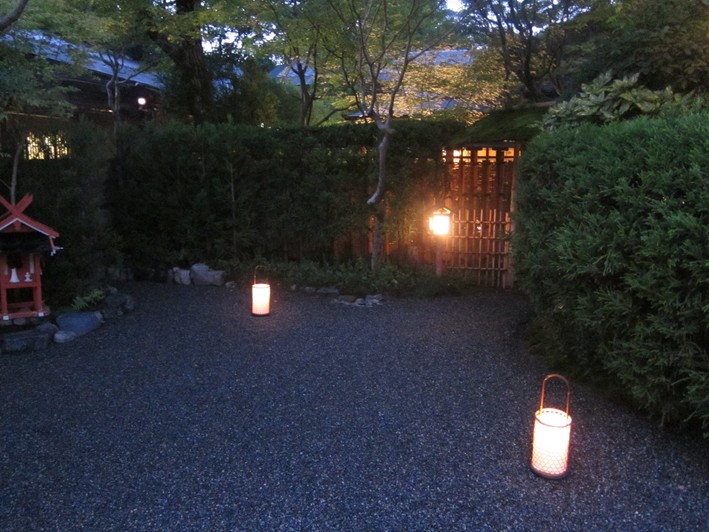 entrance
entrance

-
 dining room
dining room

-
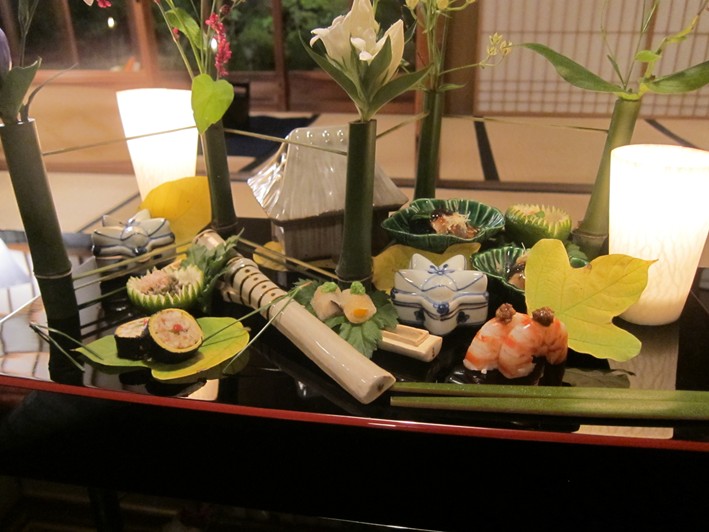 assortment of nibbles
assortment of nibbles

-
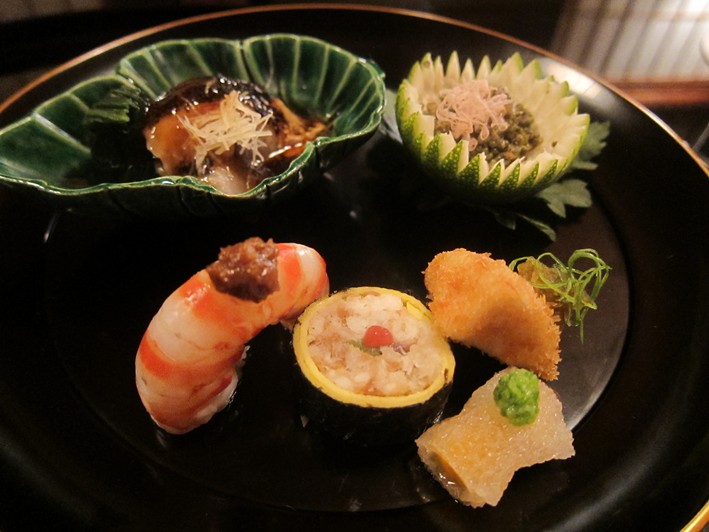 plated nibbles
plated nibbles

-
 crab
crab

-
 eel soup
eel soup

-
 salmon roe
salmon roe

-
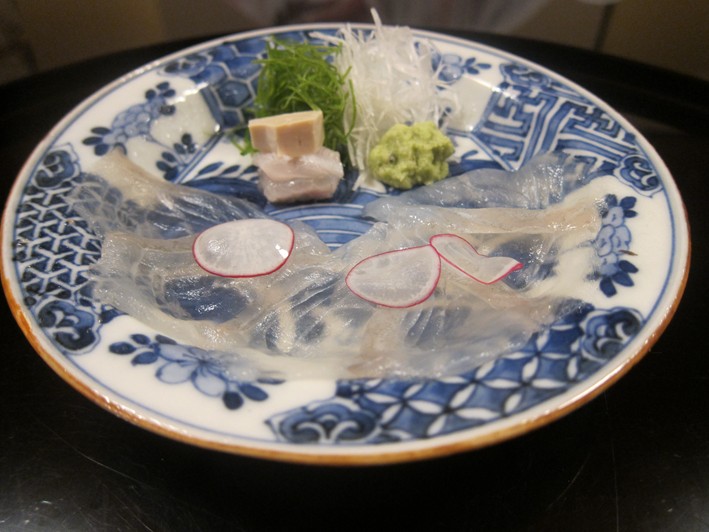 sashimi
sashimi

-
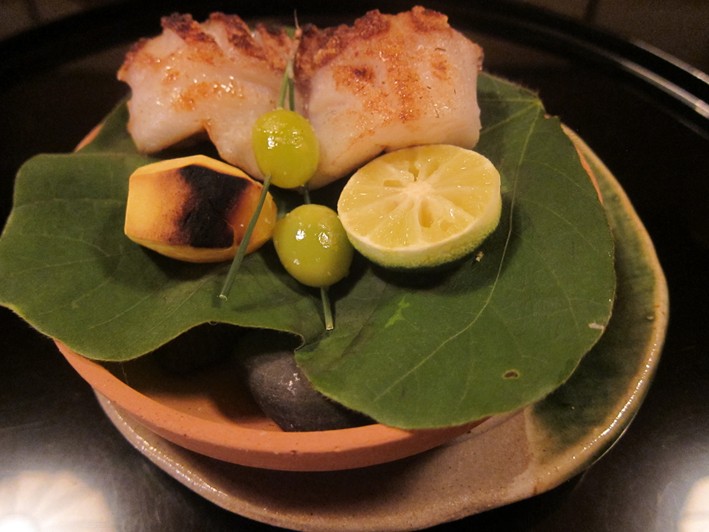 tile fish
tile fish

-
 otoro tuna
otoro tuna

-
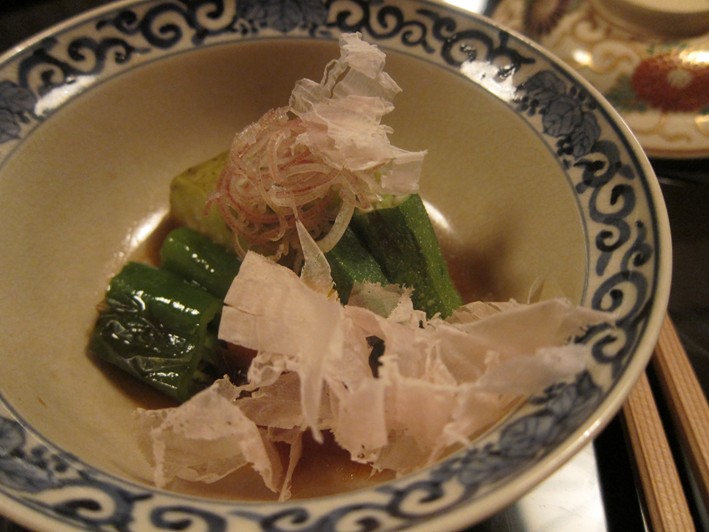 vegetables with kelp
vegetables with kelp

-
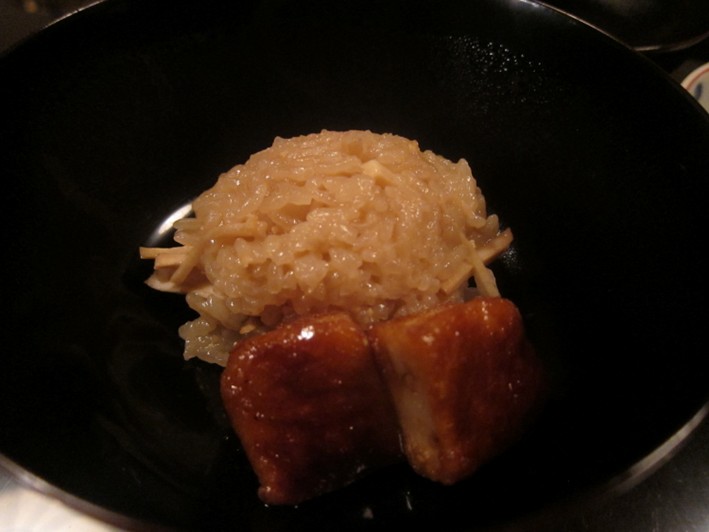 rice and beef
rice and beef

-
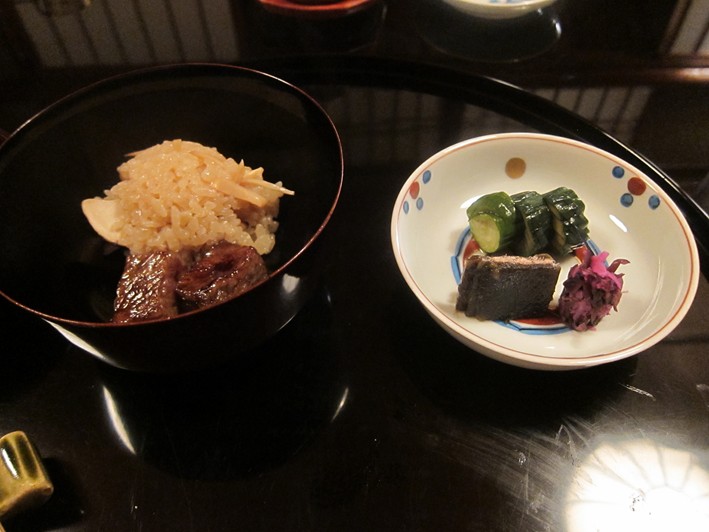 rice and pickles
rice and pickles

-
 pickles
pickles

-
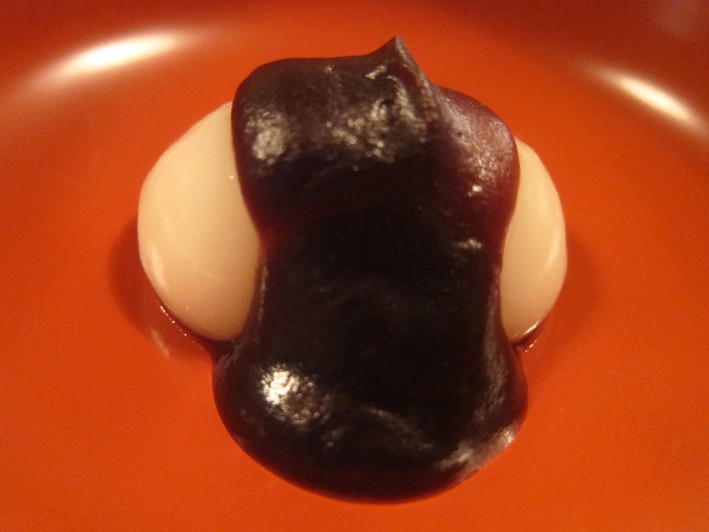 bean paste
bean paste

-
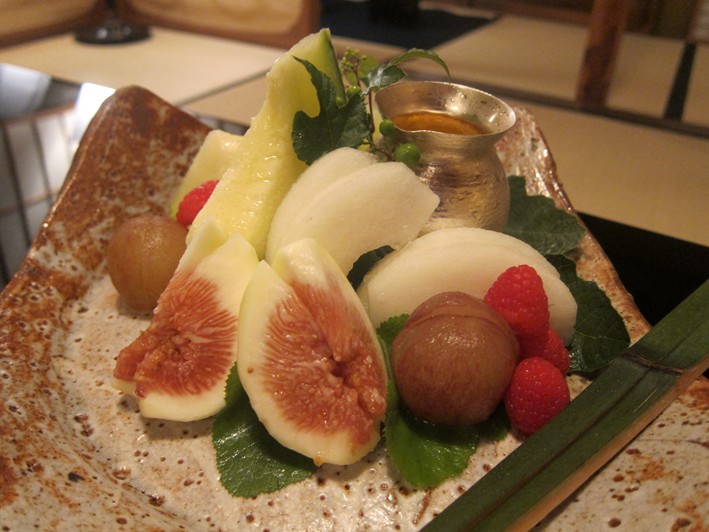 fruit
fruit

-
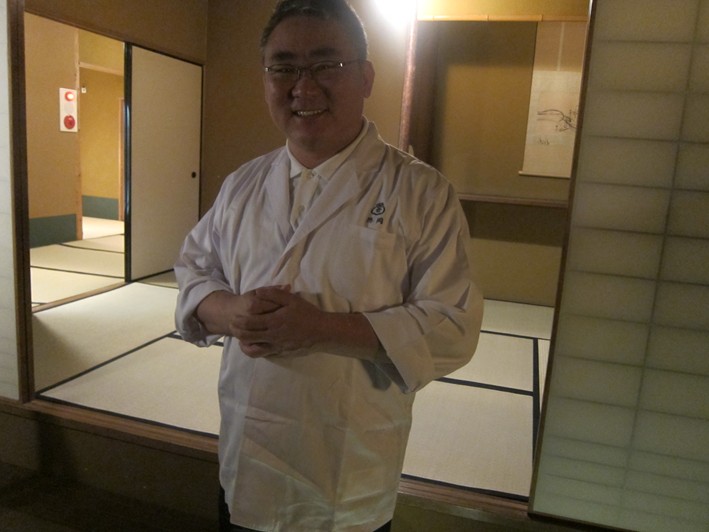 chef
chef

-
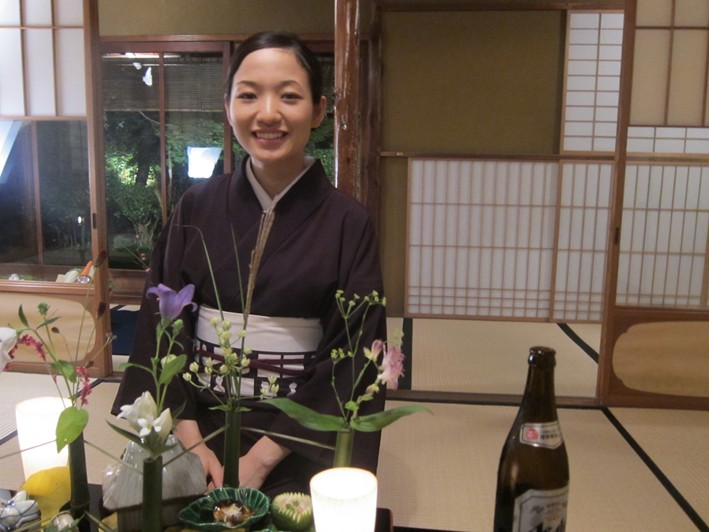 waitress
waitress

Japanese cuisine
 Average Price £400
Price I paid £363
Value for money
££££££
Overall rating 19/20
Average Price £400
Price I paid £363
Value for money
££££££
Overall rating 19/20

The type of cuisine served at this restaurant
Typical price for three courses and modest wine
What I actually paid on this particular visit
Calculated from overall rating/average price: £££££ is best, £ least good
Score for the food from 1 to 20, with 20 being world class
Add a comment
User comments
×
![]()



















Michael Schneider
Wanted to share my thanks for your review of Kitcho Arashiyama, which, along with others' (and murmurs of assent from a suffiently-foodie-to-be-trusted Japanese colleague in London) guided me to Kitcho as the unquestionable highlight of my trip. I come to Japan roughly yearly and have had a similar experience on one or two occasions (Chinzan-so in Tokyo, at its best, and a memorable but never named kaiseki restaurant in Gion). You are right to comment/advise readers as to price. But, then, so easily a better spend than five just-average dinners at £100 a head.